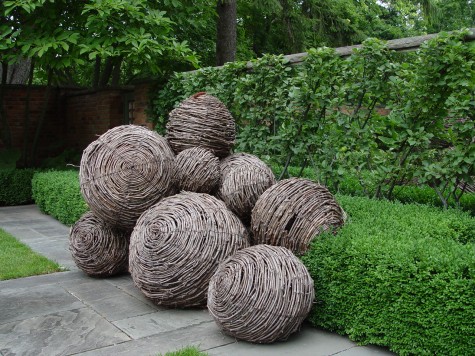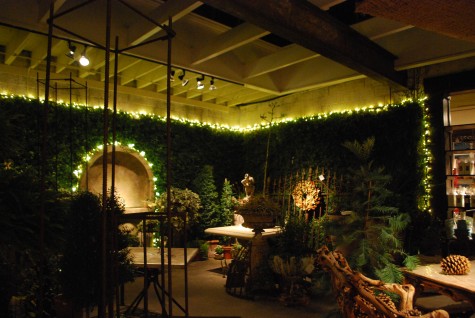
It never ceases to amaze me, how a space can be so transformed by light. Sun and shade are critical elements of successful gardening; they are equally important elements of good design. Rob did such a beautiful job lighting the greenhouse fernery for last night’s soiree. There is a time during the fall when the workroom is all but impassable. He makes garlands of lights-mixing colors, bulb size, shape and color. His most recent interest is in pairing Led lights with incandescent ones. The floor space is covered with parallel strands of lights stretched out straight. He then realigns all the wires to eliminate any light gaps, and cinches the entire assembly together every foot or so with zip ties. These 45 foot long ropes of white and chartreuse lights not only highlight the formally trimmed shape of the creeping fig growing on the walls but they evenly bathed the entire greenhouse roof structure in a warm soft glow.
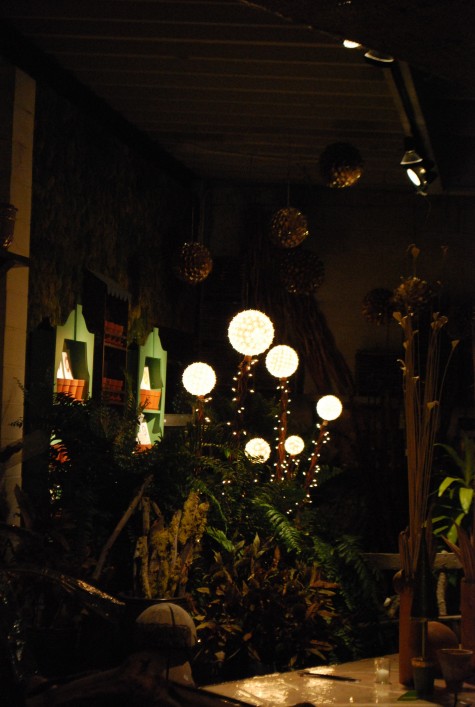 He spot lit certain elements in the room- the refreshment tables in the middle of the space for the sake of utility, and ornament on the walls, for drama. What he lights is balanced by what he keeps dim. He strongly lit the auricula theatres on the wall, so his forest stick and light orb sculptures would not throw them into harsh shadow.
He spot lit certain elements in the room- the refreshment tables in the middle of the space for the sake of utility, and ornament on the walls, for drama. What he lights is balanced by what he keeps dim. He strongly lit the auricula theatres on the wall, so his forest stick and light orb sculptures would not throw them into harsh shadow.
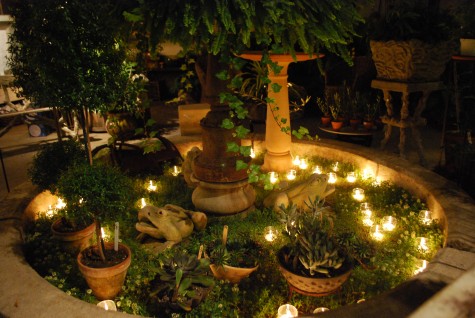 Simple votive candles can put light right where you need it. In this case, lighting the garden at the floor plane also lit the underside of our old French fountain planted with ferns. Natural candle light instantly romances anything it touches.
Simple votive candles can put light right where you need it. In this case, lighting the garden at the floor plane also lit the underside of our old French fountain planted with ferns. Natural candle light instantly romances anything it touches.
 Some of Rob’s light garlands get another decorative element. Light cords are are an incredibly unnatural shade of green; I cannot understand why an olive/brown color is not an option. We do buy lights with brown cords for wrapping sticks or tree trunks. This garland has a weatherproof ball garland that gives the light a diaphanous quality. This is my idea of good garden jewelry.
Some of Rob’s light garlands get another decorative element. Light cords are are an incredibly unnatural shade of green; I cannot understand why an olive/brown color is not an option. We do buy lights with brown cords for wrapping sticks or tree trunks. This garland has a weatherproof ball garland that gives the light a diaphanous quality. This is my idea of good garden jewelry.
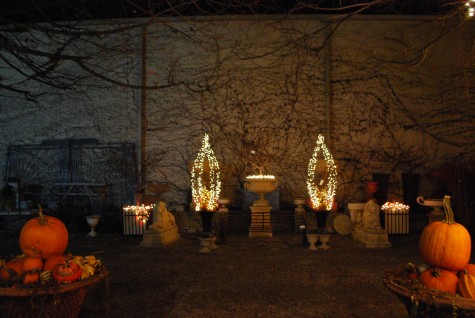 Large light fixtures on the wall of the shop subtly light the Boston ivy vines on the opposing wall; the intense light in the pots, and on the tuteurs bring the ornament into focus.
Large light fixtures on the wall of the shop subtly light the Boston ivy vines on the opposing wall; the intense light in the pots, and on the tuteurs bring the ornament into focus.
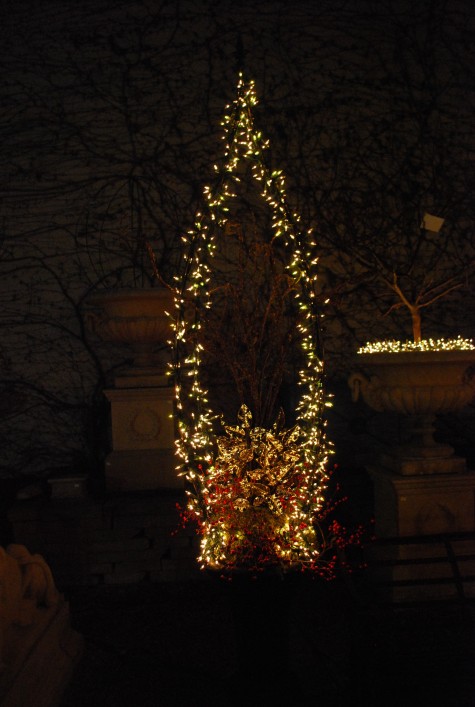 The chartruese lights repeat the color of the moss, and add dimension to the light. The light emphasizes the sparkle and sass of the holiday elements.
The chartruese lights repeat the color of the moss, and add dimension to the light. The light emphasizes the sparkle and sass of the holiday elements.
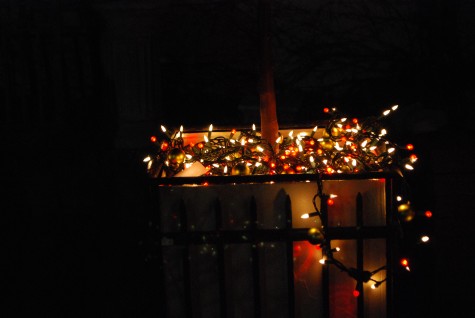 This is Rob’s winter berried vine light garland. The olive plastic holiday balls wired on every so often add texture and color that looks great even during the day.
This is Rob’s winter berried vine light garland. The olive plastic holiday balls wired on every so often add texture and color that looks great even during the day.
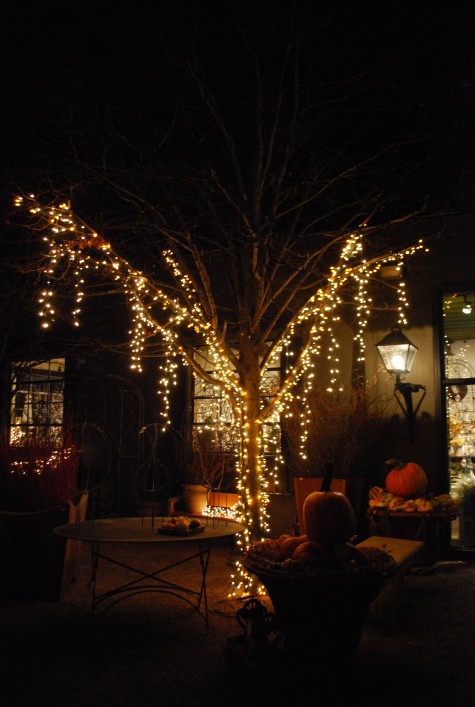 The linden is draped in his light rendition of spanish moss. The unseasonably warm weather we have had for the past few weeks has been favorable for outdoor installations. In years when the really cold weather comes early, this kind of work can be daunting. With the temperature at 57 today, it is a perfect day to dress a garden in light.
The linden is draped in his light rendition of spanish moss. The unseasonably warm weather we have had for the past few weeks has been favorable for outdoor installations. In years when the really cold weather comes early, this kind of work can be daunting. With the temperature at 57 today, it is a perfect day to dress a garden in light.
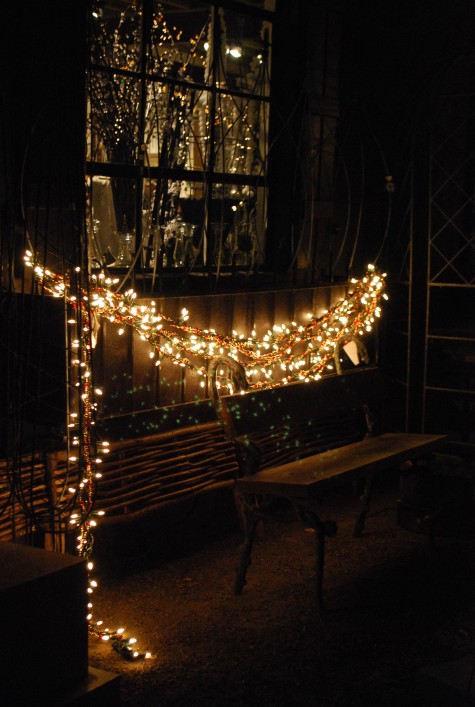 These commercial grade light strings have frosted bulbs; they produce a very soft light that is easy on the eye.
These commercial grade light strings have frosted bulbs; they produce a very soft light that is easy on the eye.
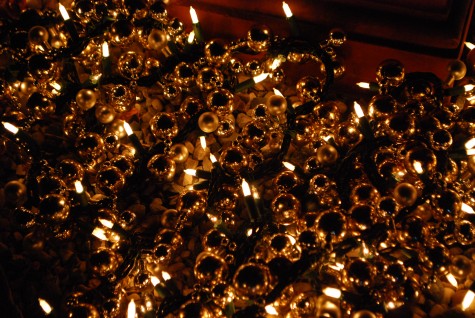 Though the ball garland in this strand is silver, the color of the terra cotta pot in which they are installed makes a richly colored night presentation vastly different than the day look.
Though the ball garland in this strand is silver, the color of the terra cotta pot in which they are installed makes a richly colored night presentation vastly different than the day look.
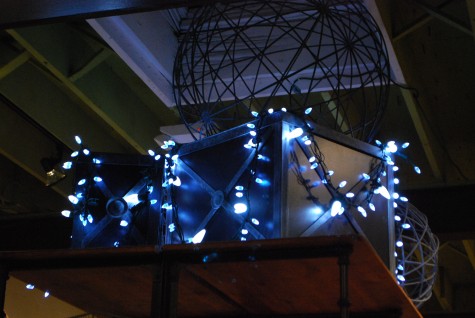
White Leds look like ice on fire-very chilly. These powerful lights readily read from great distances; they are clearly much more about drama than romance. Though my patience for shopping the lighting showrooms with Rob is limited, I love the results. My favorite commercially produced garland lights have all the bulbs very close together; I like less cord, and more light.
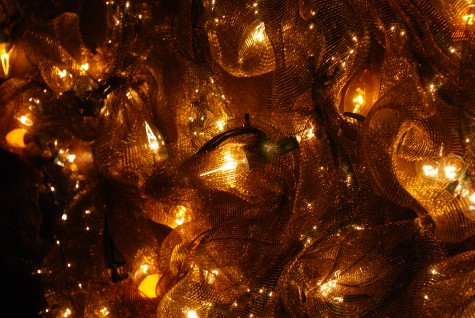
These warm amber and yellow lights veiled in a metallic mesh are all about mystery. Though I firmly believe good design is in no small part about editing, I relax that rule this time of year. There is no such thing as too much of this kind of night life.

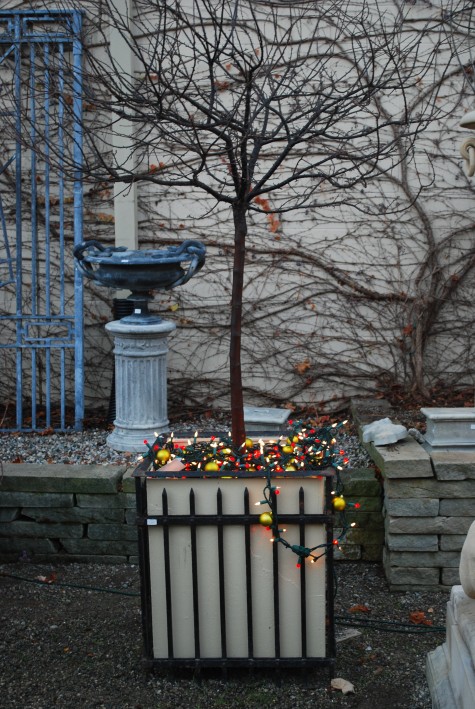

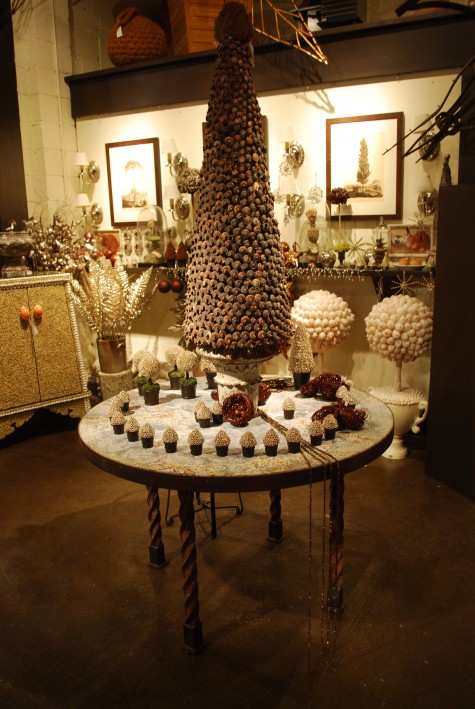

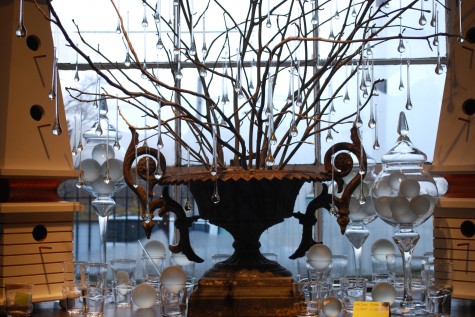
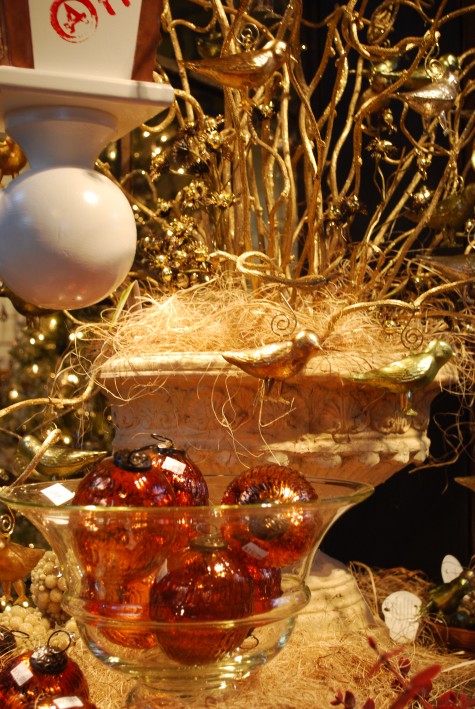 Anything that transmits or intensifies the available light I find hard to resist. Michigan is one of those states with mostly cloudy days in the winter.
Anything that transmits or intensifies the available light I find hard to resist. Michigan is one of those states with mostly cloudy days in the winter.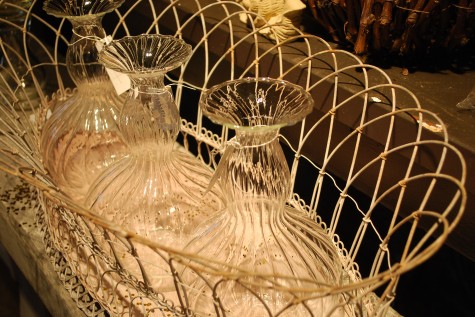
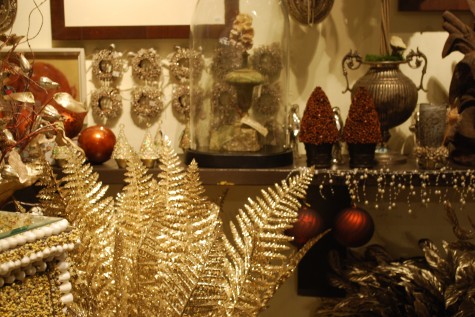
 “Tuteur” is that elegant French word for those structures designed to support and make an orderly presentation of a vining plant. Vines are by nature unruly and out of control. Their exuberant habit of growth can be as exhausting to deal with as a recalcitrant two year old. Most plant climbers I find wanting for three things-good looks, thoughtful design, and proper size. Having made a succesful foray into steel wire structures via our spheres, it seemed time to design out the poor looks and clumsy design of what was available, and fabricate some good looking tuteurs I thought would work well.
“Tuteur” is that elegant French word for those structures designed to support and make an orderly presentation of a vining plant. Vines are by nature unruly and out of control. Their exuberant habit of growth can be as exhausting to deal with as a recalcitrant two year old. Most plant climbers I find wanting for three things-good looks, thoughtful design, and proper size. Having made a succesful foray into steel wire structures via our spheres, it seemed time to design out the poor looks and clumsy design of what was available, and fabricate some good looking tuteurs I thought would work well. 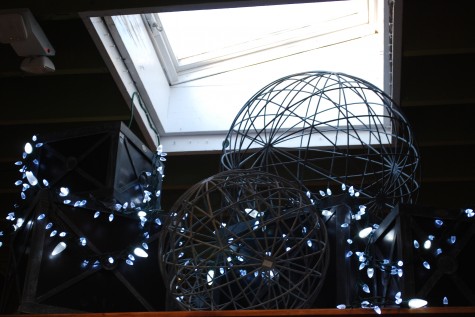 It was my intention from the beginning that a tuteur needed to be beautiful to look at once the garden had gone dormant. They might even be useful in another season. They might be designed with curves friendly to the natural shape of the vines. Those straight sided plant climbers with a curving vine bulging out of them-a bad marriage. And lastly, they need to be sized according to the eventual size of the vine they are meant to support-not to UPS shipping regulations. Some tuteurs have been designed to break down into several pieces-for economy of shipping; these never work.
It was my intention from the beginning that a tuteur needed to be beautiful to look at once the garden had gone dormant. They might even be useful in another season. They might be designed with curves friendly to the natural shape of the vines. Those straight sided plant climbers with a curving vine bulging out of them-a bad marriage. And lastly, they need to be sized according to the eventual size of the vine they are meant to support-not to UPS shipping regulations. Some tuteurs have been designed to break down into several pieces-for economy of shipping; these never work. 
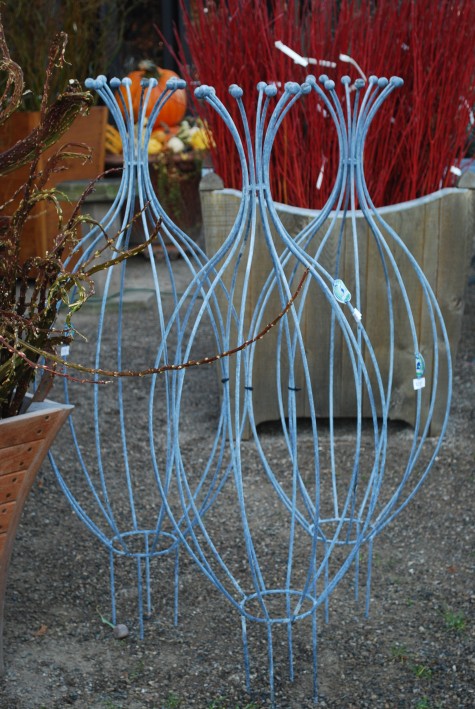 All of our tuteurs make reference to natural forms. Some say these look like onions or shallots; others are reminded of garlic cloves. In any event, we make these forms in three sizes; the size dictates the shape. Not all shapes work scaled up, or scaled down-this I learned from Rob. Sometimes the proportions have to be changed when the size changes. The ball finials at the top make the structure look finished and dressy. They also protect the gardener from a poke in the eye-has not every gardener be stabbed by their plant climbers, stakes and supports at one time or another?
All of our tuteurs make reference to natural forms. Some say these look like onions or shallots; others are reminded of garlic cloves. In any event, we make these forms in three sizes; the size dictates the shape. Not all shapes work scaled up, or scaled down-this I learned from Rob. Sometimes the proportions have to be changed when the size changes. The ball finials at the top make the structure look finished and dressy. They also protect the gardener from a poke in the eye-has not every gardener be stabbed by their plant climbers, stakes and supports at one time or another?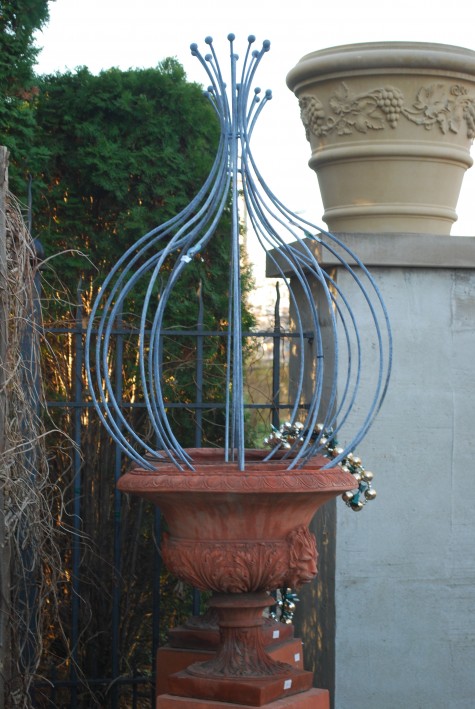 This pair of English concrete pots are all the better for their top dressing. The pots could be planted with ivy growing over one side of the tuteur in the summer-or not. They could be left out all winter empty, and look great. It is a test of a good garden pot presentation-does it represent as well empty, as it does overflowing with flowers?
This pair of English concrete pots are all the better for their top dressing. The pots could be planted with ivy growing over one side of the tuteur in the summer-or not. They could be left out all winter empty, and look great. It is a test of a good garden pot presentation-does it represent as well empty, as it does overflowing with flowers? 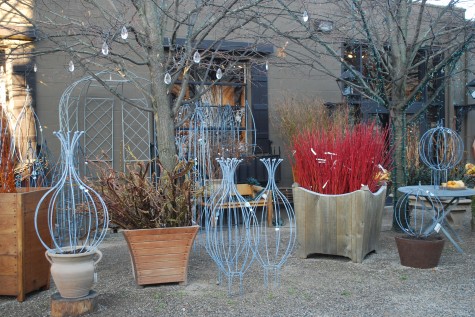 I did not anticipate how very much a part of the winter season these sculptures would prove to be. They look great with greens, berries and other materials from the garden at their base. They make something showy of our off season.
I did not anticipate how very much a part of the winter season these sculptures would prove to be. They look great with greens, berries and other materials from the garden at their base. They make something showy of our off season. 
 The shapes work in both contemporary and traditional gardens-what a relief to be able to offer a client with contemporary taste, a tuteur that looks like it belongs to them.
The shapes work in both contemporary and traditional gardens-what a relief to be able to offer a client with contemporary taste, a tuteur that looks like it belongs to them. 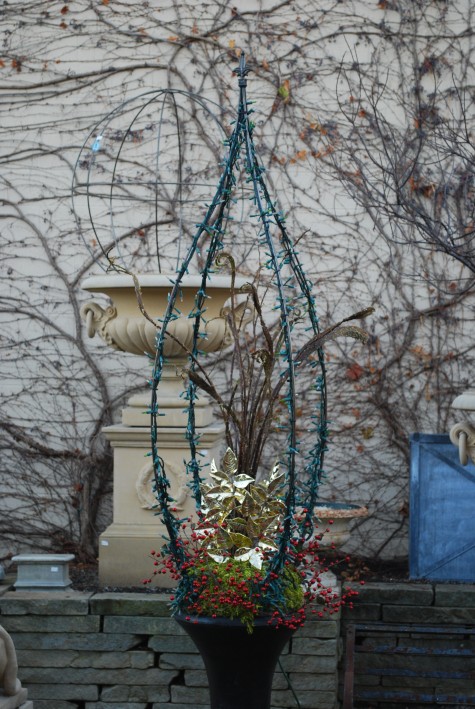 Decorating for the holidays outdoors is a form of gardening, and those strings of lights common to the season are a type of vine. Some tuteurs we design fulfills this purpose. They are very simple in shape, and overscaled such that the lit forms read as topiary at night. It will not be long before it starts getting dark at 4 in the afternoon here-any gesture defiant of the dark, I like.
Decorating for the holidays outdoors is a form of gardening, and those strings of lights common to the season are a type of vine. Some tuteurs we design fulfills this purpose. They are very simple in shape, and overscaled such that the lit forms read as topiary at night. It will not be long before it starts getting dark at 4 in the afternoon here-any gesture defiant of the dark, I like. This is my favorite climber, designed after Rob’s hand wrapped galvanized wire tomato cages. The tuteur is much larger at the top than the bottom. My sweet autumn clematis may have 6 stout stems coming out of the ground, but once it gets to 14 feet tall, it is billowing out in every direction; this tuteur handles that. The fern curl detail at the top is a simple reference to the look of an ostrich fern breaking dormancy in the spring; this is a form I never tire of. We make these in a range of sizes. Our individual plant stakes of this design come straight out of the ground or pot, and then gracefully curve out to catch whatever happens to be growing that way. We make them as half rounds that can be snugged up against a wall. In short, we are gardeners, designing for gardeners. In this application, they provide wire perches for a collection of holiday birds.
This is my favorite climber, designed after Rob’s hand wrapped galvanized wire tomato cages. The tuteur is much larger at the top than the bottom. My sweet autumn clematis may have 6 stout stems coming out of the ground, but once it gets to 14 feet tall, it is billowing out in every direction; this tuteur handles that. The fern curl detail at the top is a simple reference to the look of an ostrich fern breaking dormancy in the spring; this is a form I never tire of. We make these in a range of sizes. Our individual plant stakes of this design come straight out of the ground or pot, and then gracefully curve out to catch whatever happens to be growing that way. We make them as half rounds that can be snugged up against a wall. In short, we are gardeners, designing for gardeners. In this application, they provide wire perches for a collection of holiday birds.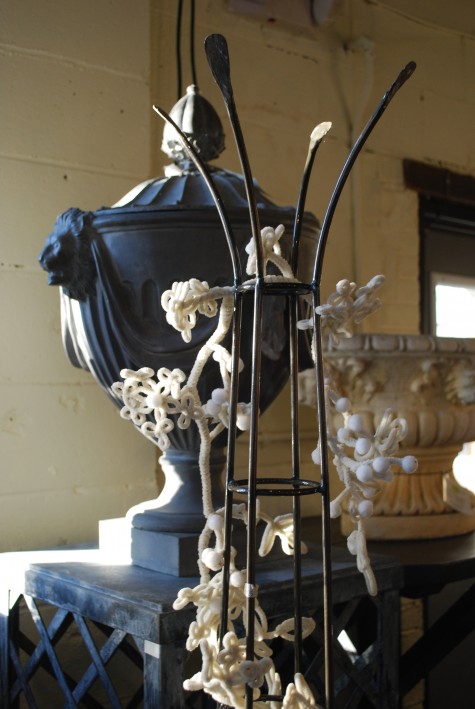
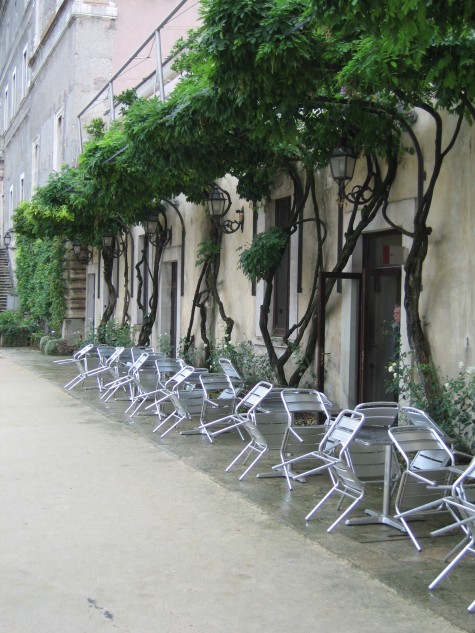 Vining plants have a very special charm. Provided they have secure support, they take up little to no room in a garden. Most of them are energetic growers; this I especially appreciate in a plant. Wisteria gives new meaning to the phrase “willing and able”, but with proper support and ruthless pruning, their sculptural effect in a garden will rival their long and languid racemes of flowers in June. I would only advise that any thought of planting wisteria should be undertaken in tandem with where the iron will come from. Iron support, and iron fisted supervision are must haves. Any other scenario risks waking up to it growing in your bedroom window.
Vining plants have a very special charm. Provided they have secure support, they take up little to no room in a garden. Most of them are energetic growers; this I especially appreciate in a plant. Wisteria gives new meaning to the phrase “willing and able”, but with proper support and ruthless pruning, their sculptural effect in a garden will rival their long and languid racemes of flowers in June. I would only advise that any thought of planting wisteria should be undertaken in tandem with where the iron will come from. Iron support, and iron fisted supervision are must haves. Any other scenario risks waking up to it growing in your bedroom window.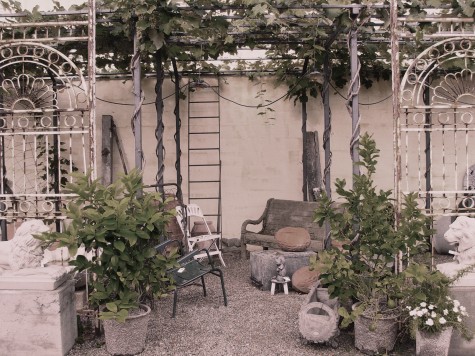
 Grapes are like any other vine-lax in habit, and best grown within the confines of a well run dictatorship. They are sterling performers with a good gardener at the helm. But like the willows and dogwoods I discussed yesterday, their strong suit is about the harvest. I will never grow grapes for the table or for wine; I suspect the art and science behind that is considerably more than I imagine or could grasp. But I do value the look and feel of ornament made from materials from the garden.
Grapes are like any other vine-lax in habit, and best grown within the confines of a well run dictatorship. They are sterling performers with a good gardener at the helm. But like the willows and dogwoods I discussed yesterday, their strong suit is about the harvest. I will never grow grapes for the table or for wine; I suspect the art and science behind that is considerably more than I imagine or could grasp. But I do value the look and feel of ornament made from materials from the garden.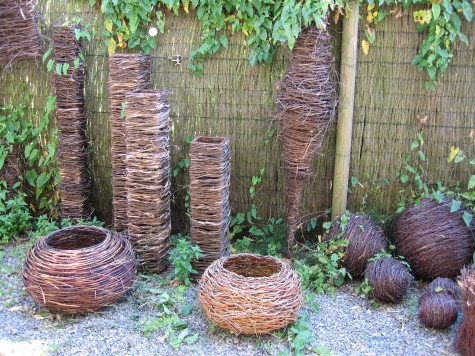 My shop has featured many garden ornaments made from vines and flexible twigs over the years. They never seem to loose their appeal. Those woven over a steel framework have an astonishing long life; they are as beautiful breaking down as they are brand new. Every year I pick up a large French basket from a client planted with a colony of medium sized agaves, amazed that it is still all of a piece. Enamoured as I am of Belgian design both inside and out, these airy, often hairy objects are a beautiful foil to brick, plaster, stone, concrete and iron.
My shop has featured many garden ornaments made from vines and flexible twigs over the years. They never seem to loose their appeal. Those woven over a steel framework have an astonishing long life; they are as beautiful breaking down as they are brand new. Every year I pick up a large French basket from a client planted with a colony of medium sized agaves, amazed that it is still all of a piece. Enamoured as I am of Belgian design both inside and out, these airy, often hairy objects are a beautiful foil to brick, plaster, stone, concrete and iron.  Only in England would you find a business named The English Hurdle and Basket Center. Despite sounding like remedial center for floundering collegians, it actually produces vessels and baskets of great artistry. The graceful shapes belie the skill and strength needed to form them. The artist Serena de la Hey, for whom I have the greatest respect, creates truly inspired sculpture for the garden. My very first purchase for my shop in 1995 was a order for one of her boar sculptures. She is well worth a look;
Only in England would you find a business named The English Hurdle and Basket Center. Despite sounding like remedial center for floundering collegians, it actually produces vessels and baskets of great artistry. The graceful shapes belie the skill and strength needed to form them. The artist Serena de la Hey, for whom I have the greatest respect, creates truly inspired sculpture for the garden. My very first purchase for my shop in 1995 was a order for one of her boar sculptures. She is well worth a look; 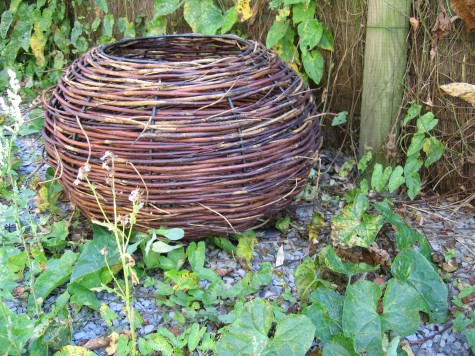 The framework that is visible here makes the object eminently renewable. Though the wood and bark of willow is remarkably resilient to weather, it will eventually deteriorate. I appreciate the chance to renew, redo, and rethink an object; this is a good part of the appeal of twig and branch sculpture.
The framework that is visible here makes the object eminently renewable. Though the wood and bark of willow is remarkably resilient to weather, it will eventually deteriorate. I appreciate the chance to renew, redo, and rethink an object; this is a good part of the appeal of twig and branch sculpture.  Though this stag looks perfectly at home in my client’s landscape, it is made in California. The metal frame will last a lifetime. The willow is painstakingly woven; the sculpture is heavy and sturdy. Carleen’s life size animal sculptures are enchanting. I have seen enough of them to recognize which of her artisans is responsible for a specific piece. This is grape vine, beautifully rendered.
Though this stag looks perfectly at home in my client’s landscape, it is made in California. The metal frame will last a lifetime. The willow is painstakingly woven; the sculpture is heavy and sturdy. Carleen’s life size animal sculptures are enchanting. I have seen enough of them to recognize which of her artisans is responsible for a specific piece. This is grape vine, beautifully rendered.